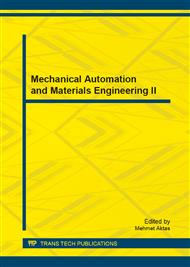p.544
p.549
p.554
p.559
p.564
p.569
p.574
p.580
p.585
Study on Control Technology of Pneumatic Servo Spot Welding Gun
Abstract:
Control technology of pneumatic servo spot welding gun is studied, using the proportional flow valve as the control device. The mathematical model of the proportional valve-controlled cylinder system is established, and the experimental studies of position and force control for pneumatic servo spot welding gun have been done. The experimental results show that the servo gun opens smoothly and fast, the impact of electrode is greatly reduced, and the electrode force is controlled precisely and kept steadily, the quick changing of the electrode force is achieved in the welding process.
Info:
Periodical:
Pages:
564-568
Citation:
Online since:
June 2014
Authors:
Keywords:
Price:
Сopyright:
© 2014 Trans Tech Publications Ltd. All Rights Reserved
Share:
Citation:


